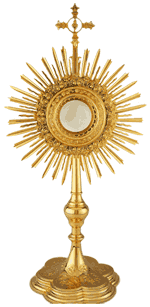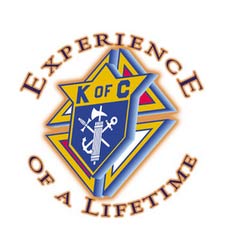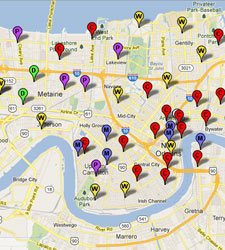Rectory 504-899-1378 | Fax 504-899-0480
School 504-891-1927
ststephenpar@archdiocese-no.org
From the Pastor – July 20, 2025
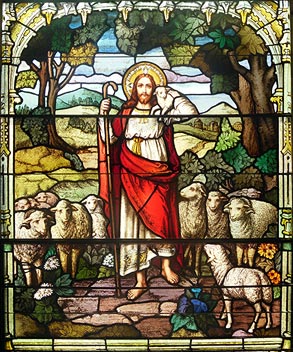 “Martha, Martha, you are anxious and worried about many things. There is need of only one thing. Mary has chosen the better part and it will not be taken from her.” (Lk 10:25-27)
“Martha, Martha, you are anxious and worried about many things. There is need of only one thing. Mary has chosen the better part and it will not be taken from her.” (Lk 10:25-27)
There’s a tendency to take this Sunday’s Gospel as an encouragement of laziness. We hear that Mary is sitting at the feet of Jesus doing nothing, and Martha is doing all of the work. Yet, when Martha complains, Jesus reassures the two that Mary has “chosen the better part.” So doing nothing but listening to Jesus is better than helping out around the house? Sounds like a quick way our of household chores! “Need me to mow the lawn? Sorry, but I’ve chosen the “better portion”; I’m heading to the Adoration Chapel to pray!
That’s not really what’s going on here. What Jesus is referring to is not the literal “action” of the scene, with Mary praying and Martha working. He’s actually more concerned with where their hearts are. Jesus is concerned about Mary being anxious and worried. And by singling out Martha’s anxiety in contrast to Mary’s peace, He’s pointing to Himself as the source of peace.
So now the big question. How does this apply to us? I would bet many of us more closely fit the Martha paradigm than the Mary model. We are all incredibly busy, and we continue and continue to put things into our lives that make us busier! Does that mean it’s bad to be busy? Not necessarily. But it’s bad when that busyness starts to affect our lives by making us worried and anxious. And if that happens, we need to stop for a moment, and remember that Jesus is the Prince of Peace. When we’re at our busiest and our anxiety level rises is the time that we need to sit at the feet of Jesus (my favorite place is the chapel near the Tabernacle) and receive his peace.
During my first year as a priest, I spent part of my summer making a 30 day Ignatian silent retreat. Far from being a “lazy” time, I finally understood why the “Spiritual Exercises” of St. Ignatius are called “exercises.” Praying 4-5 hours a day is hard work! Although I learned during my retreat that I wasn’t called to be a monk spending my whole life in contemplative prayer, I did learn where I needed to go when my life got too anxious: to the feet of Jesus. So if you ever see me, and I seem “frazzled” (like a friend noticed recently), give me some of my own advice. Tell me I need to go pray! You know what? I’ll agree with you.
(Rev. Msgr.) Christopher H. Nalty
msgr.nalty@gmail.com
Masses
St. Stephen
Saturday Vigil at 4:00 pm
Sunday at 8:00 am and 10:30 am
Sunday at 5:00 pm at OLGC
Our Lady of Good Counsel (OLGC)
Center of Jesus the Lord
Charismatic Mass
Sunday at 10 am
Weekdays Masses
Monday – Friday 6:30 am St. Henry
Tuesdays 6:00 pm St. Stephen
First Fridays 6:00 pm Latin Mass
Adoration of the Blessed Sacrament
Tuesdays 4:45 – 5:45pm St. Stephen
Thursdays 7:00 – 8:00am St. Henry
Confession Times at Good Shepherd
Saturdays 3:00 – 3:45pm St. Stephen
Sundays 9:30 – 10:15am St. Stephen
Sundays 10:00 – 10:30am OLGC
First Fridays 6:30 – 7:00pm OLGC
Newsletter Sign Up
Christmas in July!
A Christmas Giving Tree has been set up next to the St. Anthony Statue. St. Vincent de Paul Society would like to be able to offer more dollars and maybe pay an entire utility bill for someone in need. All donations will be designated to assist with an utility bill payment. Take an “ornament” from the tree in the rear of church and return before the end of July. There is no need to buy a present and wrap it; the Society of St. Vincent de Paul will do the rest! God’s blessing to all of you!
Ignatian Volunteer Corps
ENRICH YOUR RETIREMENT – ENRICH THE LIVES OF OTHERS
Are you retired or finished raising your family? Do you want to give back, enrich your spiritual life and build community with other mature adults? Then consider joining the Ignatian Volunteer Corps (IVC) here in New Orleans. At IVC we believe the life experience, wisdom, and skills of 50+ women and men, rooted in Gospel values, can bring justice, and transform the world. For more details, visit our website at ivcusa.org/ivc-offices/welcome-to-ivc-new-orleans, or contact Becky Goff (Regional Director) at bgoff@ivcusa.org.
Solemnity of Peter and Paul
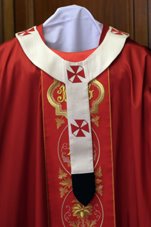 On Sunday, June 29, the Solemnity of Sts. Peter and Paul, Pope Benedict XVI will bestow the pallium on 38 metropolitan archbishops, including 14 from Europe and six from North America. The Americans are: Archbishops Jerome Listecki of Milwaukee, Wisconsin; Dennis Schnurr of Cincinnati, Ohio; and Thomas Wenski of Miami, Florida.
On Sunday, June 29, the Solemnity of Sts. Peter and Paul, Pope Benedict XVI will bestow the pallium on 38 metropolitan archbishops, including 14 from Europe and six from North America. The Americans are: Archbishops Jerome Listecki of Milwaukee, Wisconsin; Dennis Schnurr of Cincinnati, Ohio; and Thomas Wenski of Miami, Florida.
The vestment is called a “pallium,” (plural is “pallia”) and it is a narrow band of cloth woven of white lamb’s wool with a ring in the center which rests on the shoulders of its wearer. The narrow band falls down the front of the chest like a necktie and goes similarly down the back. It is decorated with six black crosses, one on each tail and four on the loop. The pallium has its origin as a liturgical vestment of the Holy Father since at least the 4th century, and it has been given to each Metropolitan Archbishop since at least the 9th century.
Worn by the pope, the pallium symbolizes the plenitudo pontificalis officii (i.e., the “fullness of Pontifical office”). When worn by Metropolitan Archbishops, it signifies the power which the Metropolitan, in communion with the Roman Church, has by law in his own province.
The story of how the pallium is made gives clues to its symbolism. The wool comes from lambs raised by Trappist monks. On, January 21, the Feast of St. Agnes (“agnes” is from the Latin word for lamb), the lambs whose wool is destined for the making of the pallia are solemnly blessed at the Basilica of Saint Agnes. However, during the last three years, the Holy Father has blessed these lambs himself at the Vatican. Wool from these lambs is then given to the Benedictine nuns of the Basilica of St Cecilia in Trastevere, and they weave the pallia. The new pallia are solemnly blessed at the Basilica of St. Peter after the Second Vespers on the feast of Sts. Peter and Paul, and are then stored in a special golden chest located directly above the original tomb of St. Peter. It is called the “Niche of the Pallia.”
If you’re ever at St Louis Cathedral on a Sunday, notice Archbishop Gregory Aymond’s pallium. It’s a great reminder of the universality and long history of our Church.
Corpus Christi Mass and Eucharistic Procession
Sunday, June 22, 2025
All are invited to participate in a Eucharistic Procession immediately following the 10:30am Mass. The procession will exit the Church, turn right on Napoleon Avenue and then go around the school and the church before returning into the church for Benediction. It will be led by a crucifer, and we will chant Eucharistic hymns as we bring carry Jesus in the Holy Eucharist throughout our neighborhood!
We would like to invite First Communicants and young children (K-4th) to wear white attire to lead the procession.
Trinity Sunday
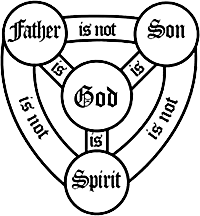
Trinity Sunday, also known as the Solemnity of the Most Holy Trinity, is celebrated a week after Pentecost Sunday in honor of the most fundamental of Christian beliefs—belief in the Holy Trinity. We can never fully understand the mystery of the Trinity, but we can sum it up in the following formula: God is three Persons in one Nature. The three Persons of God—Father, Son, and Holy Spirit—are all equally God. They cannot be divided. As the above diagram shows, each person of the Holy Trinity is a separate person, having been identified as such in the Holy Bible, but each are also the One True God. It’s why we make the sign of the cross in the Name of the Father and the Son and the Holy Spirit, rather than the “names.” It’s a profound mystery that many other religions reject. It’s not something that is easily explainable, but it was revealed by Jesus Christ through His Divine Word, and the Holy Spirit has filled our hearts and minds to help us understand it. We reinforce our belief in the Holy Trinity each time we make the sign of the cross.
The origins of the celebration of Trinity Sunday go back to the Arian heresy of the fourth century, when Arius denied the divinity of Jesus Christ by denying that there are three Persons in God. To stress the doctrine of the Trinity, the Fathers of the Church composed prayers and hymns that were recited on Sundays as part of the Divine Office, the official prayer of the Church. Eventually, a special version of that office began to be celebrated on the Sunday after Pentecost, and the Church in England, at the request of St. Thomas à Becket (1118-1170), was granted permission to celebrate Trinity Sunday. The celebration of Trinity Sunday was made universal by Pope John XXII (1316-34).
For many centuries, the Athanasian Creed was recited at Mass on Trinity Sunday. While seldom read today, the creed can be read privately or recited with your family to revive this ancient tradition.
Feast of St. Mary Magdalene July 22
Mary was called “Magdalen” because she was either from Magdala near Tiberias (on the west shore of Galilee) or possibly from a Talmudic expression meaning “curly women’s hair,” which means an adulteress.
In the New Testament Mary is mentioned among the women who accompanied Christ and ministered to Him (Luke 8:2-3), where it is also said that seven devils had been cast out of her (Mark 16:9). She is next named as standing at the foot of the cross (Mark 15:40; Matthew 27:56; John 19:25; Luke 23:49). She saw Christ laid in the tomb, and she was the first recorded witness of the Resurrection.
The Greek Fathers, as a whole, distinguish the “sinner” of Luke 7:36-50; Mary, the sister of Martha and Lazarus, and Mary Magdalen. On the other hand most of the Latin Fathers hold that these three they were one and the same. It is impossible to demonstrate the identity of the three through the Scriptural texts. Yet it is certainly Mary Magdalen who, according to all the Evangelists, stood at the foot of the cross and assisted at the entombment and was the first recorded witness of the Resurrection. And while St. John calls her “Mary Magdalen” in 19:25, 20:1, and 20:18, he calls her simply “Mary” in 20:11 and 20:16.
Many Scriptural scholars observe that the “sinner” in Luke comes early in the ministry of Jesus to seek for pardon; Mary is described immediately afterwards as Mary Magdalen “out of whom seven devils were gone forth”; shortly after, we find simply “Mary” “sitting at the Lord’s feet and hearing His words.”
To the Catholic mind it all seems fitting and natural. The sinner has repented, and she is no longer considered an “adultress.” At a later period Mary and Martha turn to “the Christ, the Son of the Living God,” and Jesus raises their brother Lazarus. Only a short time afterwards Mary and Martha make Jesus supper and Mary repeats the act she had performed when a penitent. At the Passion she stands nearby; she sees Him laid in the tomb; and she is the first Scriptural witness of His Resurrection (although it would have been only fitting for Jesus to have appeared first to His Mother) St. Mary Magdalen, patroness of penitent sinners, pray for us!
Good Stewardship
Giving to charity shows a great reliance on God, and God rewards a cheerful giver. Ever since I began “tithing,” God has given me more blessings than I can imagine. And as He gives me more, I try to give more away.
Collections in our parish cover less than 50% of our parish expenses. With the costs of insurance, salaries, utilities and upkeep, we have a tough time. Without some generous benefactors donating at year’s end, we would be in bad shape! We’re a parish that is very generous to the poor, but we also need to be good stewards of our church and buildings that have been left to us by past generations.
Please consider the following: If you give less than $5 into the collection each week, perhaps you can raise it to $5. And if you give more than $5, perhaps you can raise your contribution by 25%. Thank you for your consideration in helping to preserve our precious parish!
Your help will make a big difference in our ability to meet our financial obligations. One way to make this easy is to use our electronic giving program. To sign up, visit our Online Donations page to set up your online giving account. You may also use the paper authorization form available here or from Arielle Nash in the parish office. Call Arielle if you have difficulties.
Kateri Tekakwitha
July 14, 2025
First Native American Saint
On Sunday, October 21, 2012 the Holy Father, Pope Benedict XVI canonized the first Native American Saint, Kateri Tekakwitha. St. Kateri was born in 1656 near Auriesville, New York, the daughter of a Mohawk warrior and a Christian mother. At the age of four, smallpox attacked Tekakwitha’s village, taking the lives of her parents and baby brother, and leaving Tekakwitha an orphan. She was adopted by her two aunts and an uncle, and although forever weakened, scarred, and partially blind, Tekakwitha survived. The brightness of the sun blinded her and she would feel her way around as she walked.
When Tekakwitha was eighteen, Father de Lamberville, a Jesuit missionary, came to Caughnawaga and established a chapel. Her uncle disliked the “Blackrobe” and his strange new religion, but tolerated the missionary’s presence. Kateri vaguely remembered her mother’s whispered prayers, and was fascinated by the new stories she heard about Jesus Christ. She wanted to learn more about Him and to become a Christian.
Kateri’s family did not accept her choice to embrace Christ. After her baptism, Kateri became the village outcast. Her family refused her food on Sundays because she wouldn’t work. Children would taunt her and throw stones. She was threatened with torture or death if she did not renounce her religion. Nevertheless, Kateri remained steadfast in her faith, and lived a life dedicated to prayer, penitential practices, and care for the sick and aged. Every morning, even in coldest winter, she would be waiting at 4:00am when the chapel was opened, and she remained there until after the last Mass. She was devoted to the Eucharist and to Jesus Crucified. Her motto became “Who can tell me what is most pleasing to God that I may do it?”
Tekakwitha’s baptismal name is Catherine, which in the Iroquois languages is Kateri. Her second Iroquois name can be translated as “one who walks groping for her way” (because of her faulty eyesight).
Kateri died on April 17, 1680 at the age of twenty-four. She is known as the “Lily of the Mohawks.” Devotion to Kateri is responsible for establishing Native American ministries in Catholic Churches all over the United States and Canada. Kateri was declared Venerable in 1943 and was beatified in 1980 by Blessed Pope John Paul II. Hundreds of thousands have visited shrines to Kateri erected at both St. Francis Xavier and Caughnawaga and at her birth place at Auriesville, New York. Pilgrimages at these sites continue today.
St. Kateri’s Feast Day is July 14. She is the patroness of the Native Americans and the environment.
Feast of Our Lady of Mount Carmel – July 16
Our Lady of Mount Carmel is the title given to the Blessed Virgin Mary in her role as patroness of the Carmelite Order. The first Carmelites were Christian hermits living on Mount Carmel in the Holy Land during the late 12th and early to mid-13th century. They built in the midst of their hermitages a chapel which they dedicated to the Blessed Virgin, whom they conceived of in chivalric terms as the “Lady of the place.” Our Lady of Mount Carmel was adopted in the 19th century as the patron saint of Chile, in South America.
Since the 15th century, popular devotion to Our Lady of Mount Carmel has centered on the Scapular of Our Lady of Mount Carmel, also known as the Brown Scapular, a sacramental associated with promises of Mary’s special aid for the salvation of the devoted wearer. Traditionally, Mary is said to have given the Scapular to an early Carmelite named Saint Simon Stock. The liturgical feast of Our Lady of Mount Carmel is celebrated on 16 July.
The solemn liturgical feast of Our Lady of Mount Carmel was probably first celebrated in England in the later part of the 14th century. Its object was thanksgiving to Mary, the patroness of the Carmelite Order, for the benefits she had accorded to it through its difficult early years. The institution of the feast may have come in the wake of the vindication of their title “Brothers of the Blessed Virgin Mary” at Cambridge, England in 1374. The date chosen was 17 July; on the European mainland this date conflicted with the feast of St. Alexis, requiring a shift to 16 July, which remains the Feast of Our Lady of Mount Carmel throughout the Catholic Church. The Latin poem “Flos Carmeli” (meaning “Flower of Carmel”) first appears as the sequence for this Mass.
Home Middle #3 Widget
This is a widgeted area which is called Home Middle #3. It is using the Genesis - Featured Page widget to display what you see on the Metric child theme demo site. To get started, log into your WordPress dashboard, and then go to the Appearance > Widgets screen. There you can drag the Genesis - Featured Page widget into the Home Middle #3 widget area on the right hand side. To get the image to display, simply upload an image through the media uploader on the edit post screen and publish your page. The Featured Page widget will know to display the post image as long as you select that option in the widget interface.
Copyright © 2025 Good Shepherd Parish · New Orleans WordPress site hosting and maintenance provided by Amaze Media | Privacy Policy

